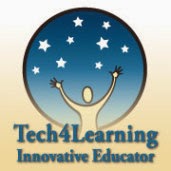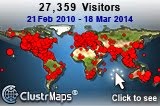This post is a little bit about teaching spelling. It is really about the ludicriousness of the way some things are taught, without looking at the whole -I think this is what
Clay Burell calls "schooliness." Spelling just provides an easy example.
Skipping over
the cute example of why spell check doesn't work for every situation- you've probably already seen it- how is spelling taught in your corner of the world?
You know the little vignette, so often dragged out to illustrate how schools are bastions of a time gone by, where the person wakes up after 100-year nap and doesn't recognize anything until he steps into a school? I'm sure the napper in the story walked in on a "spelling lesson."
When I first started teaching, I taught spelling the way I had been taught spelling in school. I devised lists of words I thought my students should know how to spell, gave assignments based on the words and then a Friday spelling test. My students generally did pretty well on the tests, but their spelling in their written work never reflected the fact that they had supposedly learned how to spell the words. It didn't take me too long to come to the conclusion that memorizing a list of words did not equal learning.
So, two questions.
1. What is the best way to teach spelling?
2. How come I learned how to spell? Remember, this is how I was taught spelling...I'm a pretty good speller. Did this approach work for me? If so, why?
I'll answer #2 first. I think that I became a good speller because I was (and still am) an avid reader. I was the kid who always had a book in front of my face. My favorite outing was the library (my idea of heaven on earth) or the bookstore (my parents would drop me off at the bookstore and go shopping, coming back an hour or so later to pick me up). I think that looking at so many words spelled correctly built my visual memory for correct spelling. I am the type who writes the word to look at it to see if it is spelled correctly. Of course, this was only one gift that being a reader gave me.
As for #1: There is a program I like called "Words Their Way" that approaches spelling from a developmental standpoint. It uses the term "word study" rather than spelling or phonics. This appeals to me because I think it is appropriate for students to spend some time deconstructing words to find patterns. It uses various centers and activities and is differentiated, based on stages of spelling development. Of course, it takes a lot of work, on the part of the teacher, to implement a program like this in the classroom. It is much easier to follow a spelling book or use a workbook, have students memorize and give weekly tests.
When I first did away with spelling tests, I found that parents were understanding once I explained my reasoning and approach. It was colleagues that were stunned. "You don't give spelling tests?" It was said with disbelief, even anger, as if I was depriving my students.
Ok? So what...I guess I should get to "the point." Now that I'm a parent, I find myself battling against the tide as my child comes home with homework to memorize a list of words and use them in sentences or occasionally in a story. My daughter is only 7 and yet she already claims to "hate school" and "doesn't like reading." This is extremely painful for me to hear, as you can imagine. My daughter spends 7.5 hours a day in school and often comes home with 30 minutes or more of homework consisting of math worksheets and the aforementioned spelling. I am a strong believer that children need down-time, time for playing and relaxing, time to play sports, time to eat dinner as a family, time to go to sleep early,
TIME TO READ FOR PLEASURE. I really believe that the best homework, especially for the early elementary grades, is to read for 30 minutes a night. That's it. I could cite a bunch of research, too, to back me up, but this is just my opinion piece...so take it for that.

 At (name of school), technology means much more than computer proficiency. 21st Century Media Literacy encompasses the skills that our students will need to succeed in a world transformed by technology. As our students work on creating, communicating, collaborating, innovating, researching, problem solving, and learning digital citizenship, they will develop proficiency with the computer. Please click on the link to review the National Educational Technology Standards (NETS) to find out more about what our students are expected to know and be able to do with technology.
At (name of school), technology means much more than computer proficiency. 21st Century Media Literacy encompasses the skills that our students will need to succeed in a world transformed by technology. As our students work on creating, communicating, collaborating, innovating, researching, problem solving, and learning digital citizenship, they will develop proficiency with the computer. Please click on the link to review the National Educational Technology Standards (NETS) to find out more about what our students are expected to know and be able to do with technology. 








